Life moves differently in the Ecuador Amazon.
We’d been out on a day’s hike through the rainforest to reach a secluded waterfall, unexpectedly accompanied by a young Ecuadorian girl who’d been acting as our guide for the last hour. Now she skipped along beside us as we trudged through the humidity of the Ecuador Amazon jungle, on the way back to our lodge for the night.
“We’ve seen more of the world in one day than she has in her whole life,” said Sam, disbelievingly.
“To be fair, she might not even know there are other places to see,” Emily pointed out. The girl grinned up at her. She’d clearly adopted Emily as her newest friend, even with the language barrier.
The girl had sat a short distance away from us while we swam in two secluded pools under a rush of raging water falling from the rocks above. And when we feasted on the contents of a cooler box filled to the brim with rice, chicken and peas, she watched us from her chosen rock, slightly wistfully, until we beckoned her over to join in with our lunch.
She sat beside Emily and a chatter of childish Spanish streamed out. Her name was Denise and she was twelve; she spent most of her time looking after her thirteen younger siblings; her favourite subject was maths; and she wanted to be a maths teacher when she got older.
It took us a three hour walk inland from the Napo river to reach Denise’s village. And as we left again, we waved goodbye to Denise’s siblings – a motley assortment of grave-faced children who stood at the door of the foremost house to watch us wander up the road.
None of them have ever left their village; not even to nearby Tena, the small town we’d started our trip from only that morning.
For Denise, the town of Tena may as well have been another world away.
Meeting a family who live deep in the Ecuadorian jungle
Our guide in the Ecuador Amazon was Juan, a local man who’d first approached us on the balcony of our hostel in Tena. He addressed us with a hesitant “bonjour” before realising that we were English and could also, in fact, speak passable Spanish – and in no time we’d signed up for a tour. Later that day, as we walked through the jungle, he explained that he’s been leading tours since he was just seventeen.
He’s wanted to show visitors around his part of the Amazon jungle ever since he started following his grandad around their farmland: watching in awe as the old man explained the meanings of the plants and insects.
Now, twenty years later, Juan’s family are an intrinsic part of his Ecuador Amazon tours.
At their wooden stilted house on an island in the middle of the Rio Napo, Juan’s mother shows us how to plant and harvest yuca and how to make chocolate from roasted cacao beans, while his nephew jumps repeatedly into the trees to pick oranges and his daughter offers us dripping segments of the fresh fruit.

Later in the evening, his wife and children jump into our canoe and cook us dinner back at the cabañas across the river.
The cabañas that Juan’s cousin – the wonderfully named Victor Hugo – built by hand last year; the cabañas that were benefitting from the installation of cable TV when we arrived back on our second night.
Because the way that Juan’s family live isn’t the expected ‘jungle’ lifestyle. It’s more modern and more similar to the rest of the world than I’d ever have thought.
Expectation versus reality in Ecuador’s Amazon jungle
So what about all those ‘real’ tribes of the Amazon – the infamous naked aggressors with blow pipes and poisoned darts? People like the Waorani tribe, living deep within the Ecuadorian jungle who sleep seven or eight to a hammock, in palm huts that fit six or seven families; huts with no doors but regular wall openings for quick escape in case of invasion. A tribe that live on the edge of perpetual suspected attack.
Or used to.
Juan told us how he spent 24 days visiting with the Waoranis, only to find that while the communal and private elements of the tribe’s nature were still very much prevalent, their need for disconnection to the outside world was sadly starting to vanish.
It’s because every fifteen days or so, oil companies come up the river with fuel, sugar and various bribable goods. They’ve gifted the tribe with installations of wifi, cable TV, electricity and hot water; all designed to bring the tribe closer to the modern world and less tied to their traditional past – less inclined, therefore, to worry about their land being purchased and dug up.
Juan, however, has taken a different route to both the Waorani and Denise’s lifestyle. The bulk of his family’s farmland is located on the island, but they only live there for a month or so in the summer; when the rains start and the water rises, they move inland to another house – or, sometimes, to the cabañas when they have guests.
Juan’s guided tours around the jungle presumably make up a large part of his income, but the family still supplement themselves with farming yuca, mangoes, bananas, cacao, plantain and oranges; harvesting at different stages all year round, and selling straight to the consumer at local markets.
He also combines the tours with the locals themselves – locals who are also his friends and neighbours.
Like paying a visit to 83 year old Don Jaime’s pineapple farm at the top of the opposite river bank, where Juan’s eager tour groups can harvest the fresh fruit and even take some back to the cabañas for the next day’s breakfast.
But isn’t this a bit of a let down when you’re expecting something rather more dramatic from a visit to the Amazon jungle?
The simple answer is no: but not for the reason you might think.
Observing traditional jungle ways in modern day Ecuador
“This is natural paint,” Juan says, as we crack open hard seed casings to reveal the bright red pods within.
“It’s also used for sunscreen, repelling insects, upset stomach – and for warding off evil,” he adds casually, while we smudge our fingers across the powdery seed surfaces and apply the colour eagerly to our noses, cheeks and, eventually, the entirety of our hands.
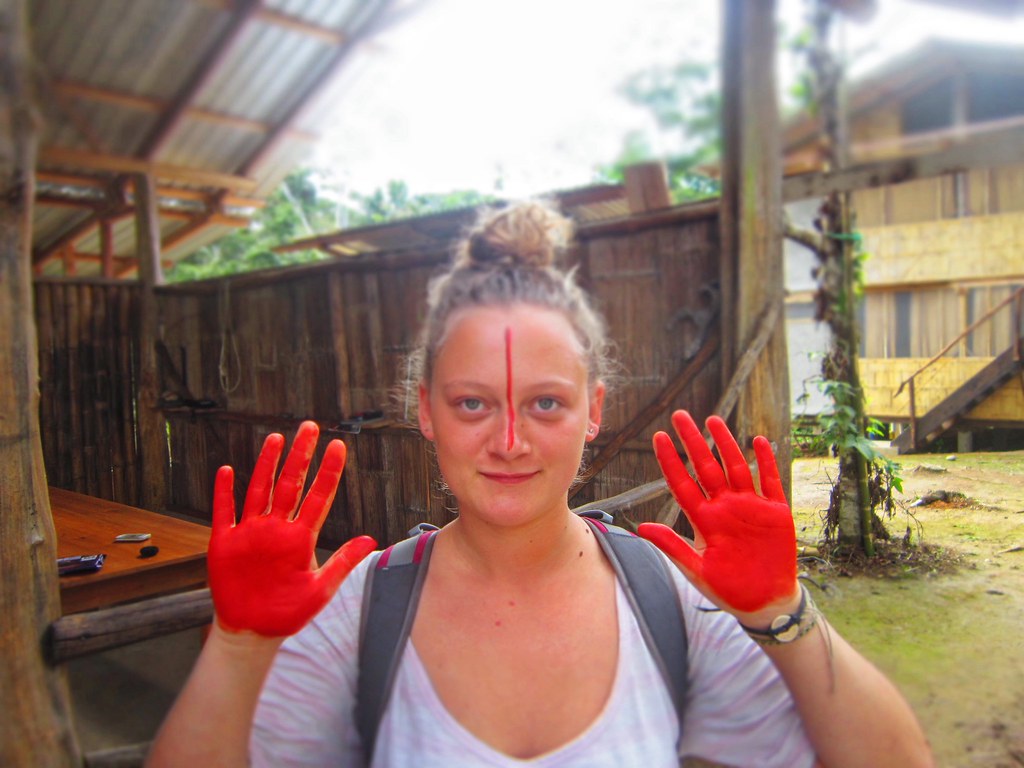
Later, when he hears Jas coughing, Juan makes us stop by the San Juanito tree so he can administer some medicine: a thin paste, made from tree bark and water, that’s poured up the nose and induces a ten minute session of involuntary coughing, spluttering and a great deal of expelled mucus.
“I always take it when I get a cold,” he says, as Jas looks up at us blearily.
And as we walk through the dense jungle vegetation, Juan points out the machete hack marks on the cruz caspi tree.
“The people of the jungle stew the bark down and drink the liquid. It’s like natural fertilisation, but can be used for abortion too.”
A tree with the ability to make you infertile. A tree with large chunks of bark missing. And nearby, the souls of people who’ve perished in the forest bob gently in the breeze; the white aya nina flowers that glow faintly in the dark.
In the Ecuador Amazon, the old influences the new
While Juan may favour a mobile phone and cable tv on demand, he still carries a machete like it’s an extension of his arm; still uses the natural medicines to be found throughout the jungle; and still believes in the myriad of superstitions that envelop this vast expanse of mysterious landscape.
Simply put? Juan was born in the jungle. He’s always lived in the area near to Tena, just like Denise, and though their lives may seem different at first glance, they have many similarities in common.
Because both Juan and Denise come from the real community who call the Amazon jungle their home.

Although there are ‘real’ tribesmen who run naked through the trees and blow poisoned darts at intruders, the more prominent citizens of the Amazon are hard working families of farmers, who catch a canoe across the river in the same way as crossing the road, and pick up locally grown pineapples like they’re buying a box of eggs from the local farm.
And Juan? He’s a self-taught trilingual tour guide, owning three properties within boat-ride distance from each other. He’s a modern day Ecuador Amazon dweller, carrying a machete in one hand and a phone in the other.

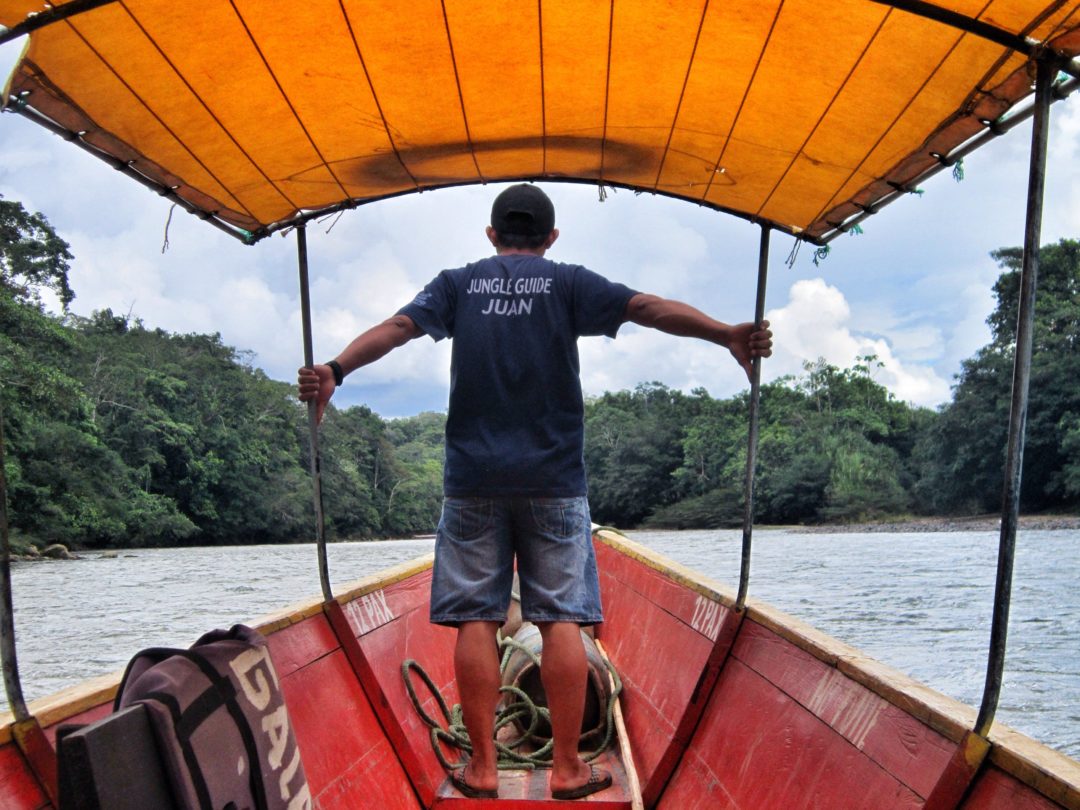




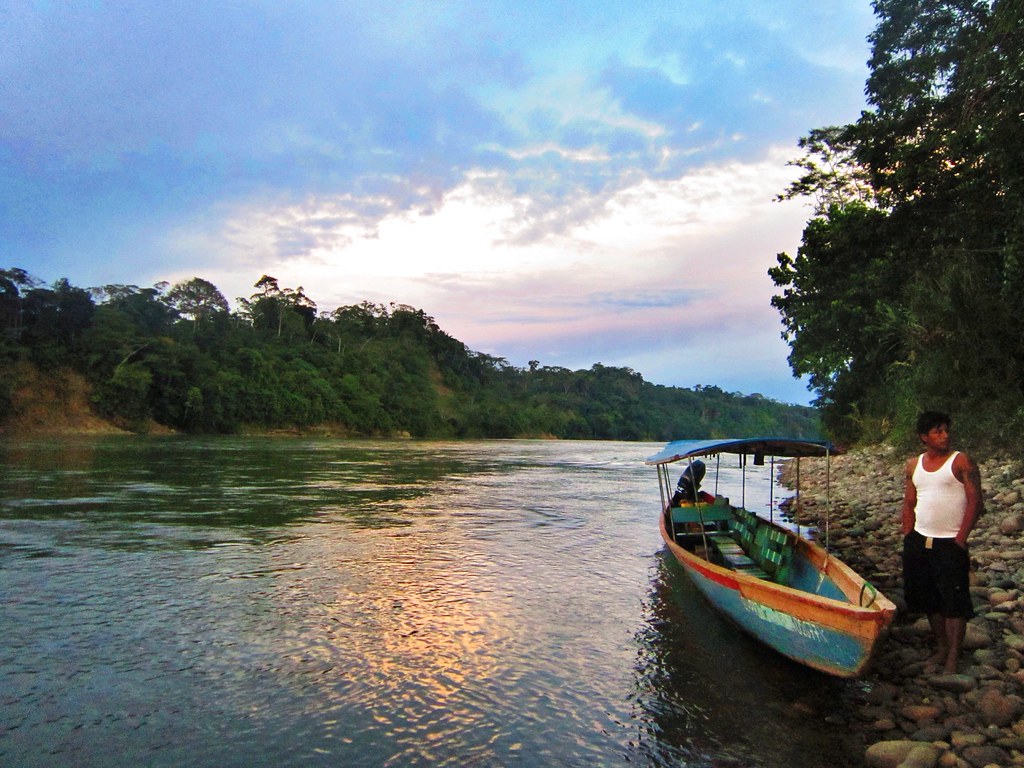


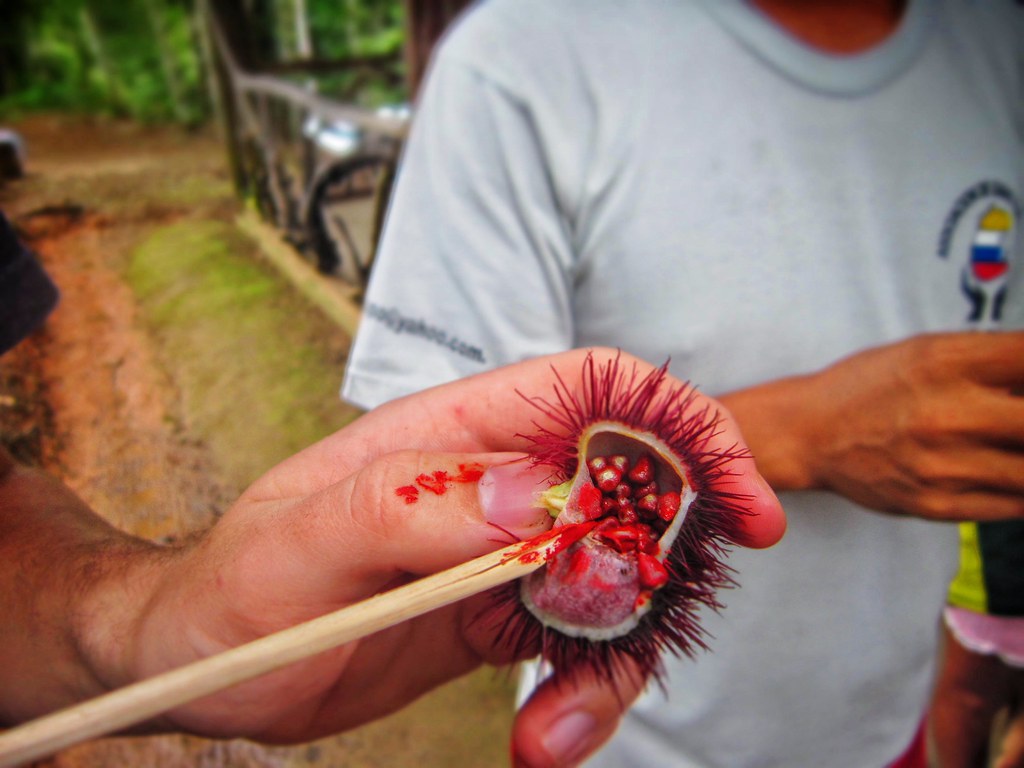


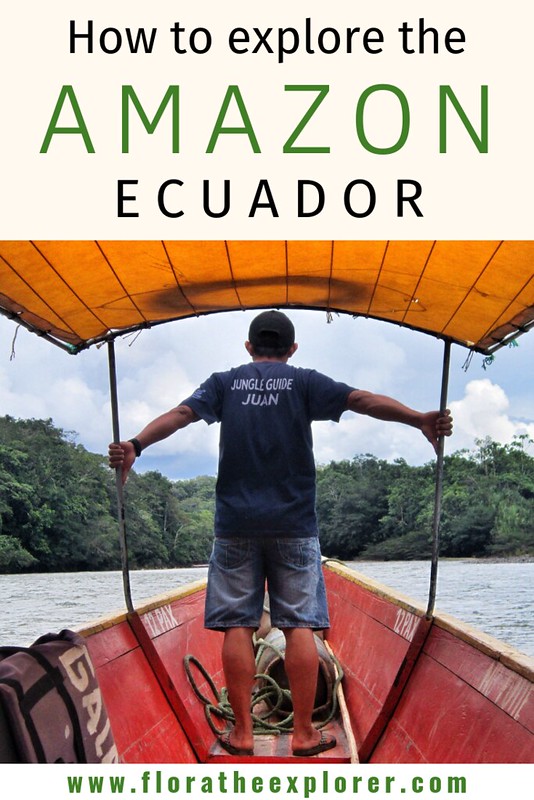

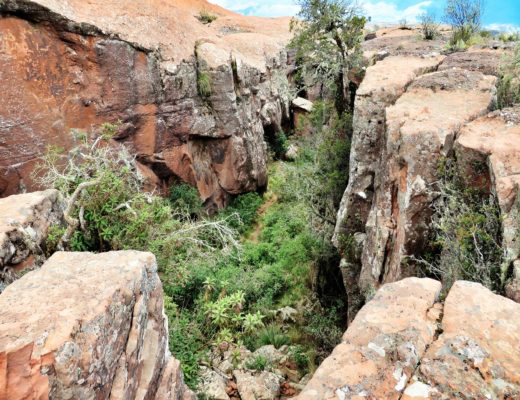
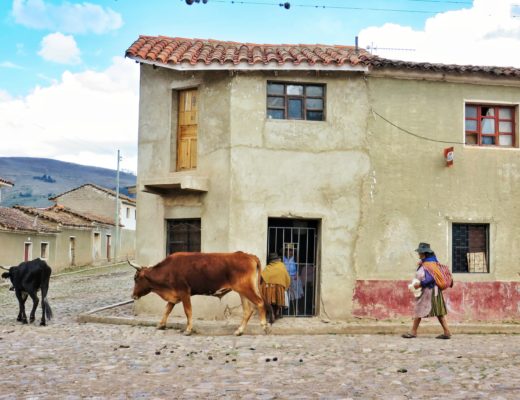
17 Comments
Wil @ Where's Wil
July 26, 2013 at 2:11 amIt’s sad that the tribal way of life is disappearing but it looks like an amazing place full of amazing experiences.
Flora
July 26, 2013 at 11:25 pmI like to think that there are still enough pockets of traditionalism hidden away in the Amazon for it to continue 🙂
Claire
July 26, 2013 at 6:33 amInteresting to read the other side of life in the Amazon. I was at a lodge/research station on the Shiripuno river recently which is run with the local Waorani community.
Flora
July 26, 2013 at 11:29 pmThat must have been a great experience, Claire!
Best Travel Articles: July 22nd-28th.Just Chuckin It! | Travel & Lifestyle Blog
July 28, 2013 at 11:51 pm[…] READ ARTICLE […]
Indrani
July 29, 2013 at 4:59 amWhat a n experience! I like such interactions with locals when I travel.
Flora
August 1, 2013 at 9:26 pmMe too, Indrani – learning about a country from a local perspective is one of the things I love the most about travelling 🙂
Sally
August 26, 2013 at 11:16 amAmazing photographs to go along with the story. Cable and Internet are almost unavoidable but it definitely makes those contrasts ten times more interesting.
Flora
September 6, 2013 at 12:22 pmYep, agreed – and it’s crazy when you discover how the modern and the traditional still manage to live side by side in spite of each other!
Yanz
June 18, 2014 at 9:51 amI thought the tour to jungle is Dangerous,cause the people there like to consider strangers as invaders. But your experience seemed so interesting,hope to see more ^^^
Flora
July 11, 2014 at 12:49 amI think it depends where in the Amazon you visit. While there are still a few tribes who have limited contact with other people, I get the impression that most of the peripheral Amazon-dwellers are all too aware of tourists, and make a lot of their money from them – these guys had satellite tv for goodness sake!
Amy Fernow
March 3, 2015 at 2:47 amHi Flora! I’ve been looking all over your website for advice on travelling in Ecuador – I’m going this summer. This trip to the Amazon sounds like an amazing experience. Do you have any budget/travel advice for going to the Amazon? I’m a med student on a tight budget (and your Galapagos article was super helpful!) Thanks!
Flora
October 30, 2015 at 10:41 amHi Amy, so sorry I only just saw your comment! I hope you had a fantastic time in Ecuador though, and that you managed to visit the Amazon as well 🙂
Faiz Alam
November 25, 2015 at 9:04 amLovely share here… Excellent post to read…
Flora i am going to subscribe you..
Flora
December 7, 2015 at 12:58 pmSo glad you enjoyed the article, Faiz 🙂
Jissell Castillo
March 23, 2017 at 3:36 pmHi Flora, live your post! I will be visiting Ecuador very soon, any idea on how to arrange a trip to the amazon?
Flora
April 2, 2017 at 10:40 amHi Jissell, glad you enjoyed the article! I only have experience with arranging trips to the Amazon when actually in-country but I’m sure you’d be able to do the same thing before you arrive in Ecuador if that’s what you’re keen to do. Either way, I hope you have a fantastic trip!